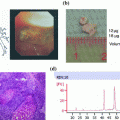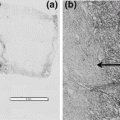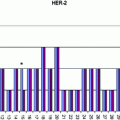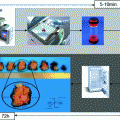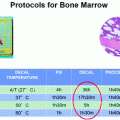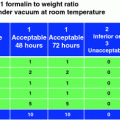© Springer International Publishing Switzerland 2015
Manfred Dietel, Christian Wittekind, Gianni Bussolati and Moritz von Winterfeld (eds.)Pre-Analytics of Pathological Specimens in OncologyRecent Results in Cancer Research19910.1007/978-3-319-13957-9_7Current Projects in Pre-analytics: Where to Go?
(1)
Department of Medical Sciences, Pathology Unit, University of Turin, via Santena 7, Turin, Italy
Abstract
The current clinical practice of tissue handling and sample preparation is multifaceted and lacks strict standardisation: this scenario leads to significant variability in the quality of clinical samples. Poor tissue preservation has a detrimental effect thus leading to morphological artefacts, hampering the reproducibility of immunocytochemical and molecular diagnostic results (protein expression, DNA gene mutations, RNA gene expression) and affecting the research outcomes with irreproducible gene expression and post-transcriptional data. Altogether, this limits the opportunity to share and pool national databases into European common databases. At the European level, standardization of pre-analytical steps is just at the beginning and issues regarding bio-specimen collection and management are still debated. A joint (public–private) project entitled on standardization of tissue handling in pre-analytical procedures has been recently funded in Italy with the aim of proposing novel approaches to the neglected issue of pre-analytical procedures. In this chapter, we will show how investing in pre-analytics may impact both public health problems and practical innovation in solid tumour processing.
Keywords
StandardisationPre-analyticInnovationFixationIschaemiaFunding opportunities1 Why New Projects in Pre-analytical Phases of Surgical Pathology
The current clinical practice of tissue handling and sample preparation is multifaceted and lacks strict standardisation: this scenario leads to significant variability in the quality of clinical samples. Technological innovations that pursue standardisation of pre-analytical processes in surgical pathology represent fundamental tools to assure correct diagnosis, which in turn will enhance treatment decisions. Standardisation of bioptic and surgical specimens is not only a need of patients but also of researchers. The detrimental effect of poor tissue preservation (i) leads to morphological artefacts; (ii) hampers the reproducibility of immunocytochemical and molecular diagnostic results (protein expression, DNA gene mutations, RNA gene expression) and (iii) affects the research outcomes with irreproducible gene expression and post-transcriptional data, thus limiting the opportunity to share and pool national databases into European common databases.
Moreover, fostering an upgrade in surgical pathology is not easier than in other healthcare fields, due to the escalating costs, long product development cycles and protracted regulatory approval. It is well known that the difficulties in economics in Europe involve also the healthcare public system thus inhibiting the innovation process. Finally, pathologists are not keen to change their habits. Procedures for preservation and processing of human tissue obtained from biopsies and surgical specimens date back to Rudolf Virchow in the nineteenth century, anachronistically known as the ‘father of modern pathology’.
On one hand, pathologists should start thinking about the possibilities to apply for funding in order to create a network open to different stakeholders. On the other hand, institutions should be better informed of our work and thus understand that our everyday diagnosis may be not scientifically sexy, but needs to be as precise, reliable and up to date as possible for the patient care.
A recent ‘viewpoint’ article [1] calls on pathologists to consider that as genomic testing becomes part of routine care and patients become increasingly informed, the workflow of pathology lab will have to adapt to meet the demands of the ‘next generation of patients’.
Pathologists are also expected to facilitate procurement, preservation and distribution of tissues to qualified biomedical researchers. Dr. Compton, Director of the National Cancer Inst. Office of Biorepositories and Biospecimen Research, said that billions of dollars have been wasted in the past because researchers developing biomarkers supposed to be predictive of cancer and response to therapies relied on tissue samples that were utterly useless; tissues had been subjected to careless handling, in addition storage and sampling procedures were missing, so that results were not reproducible.
Stay updated, free articles. Join our Telegram channel

Full access? Get Clinical Tree


